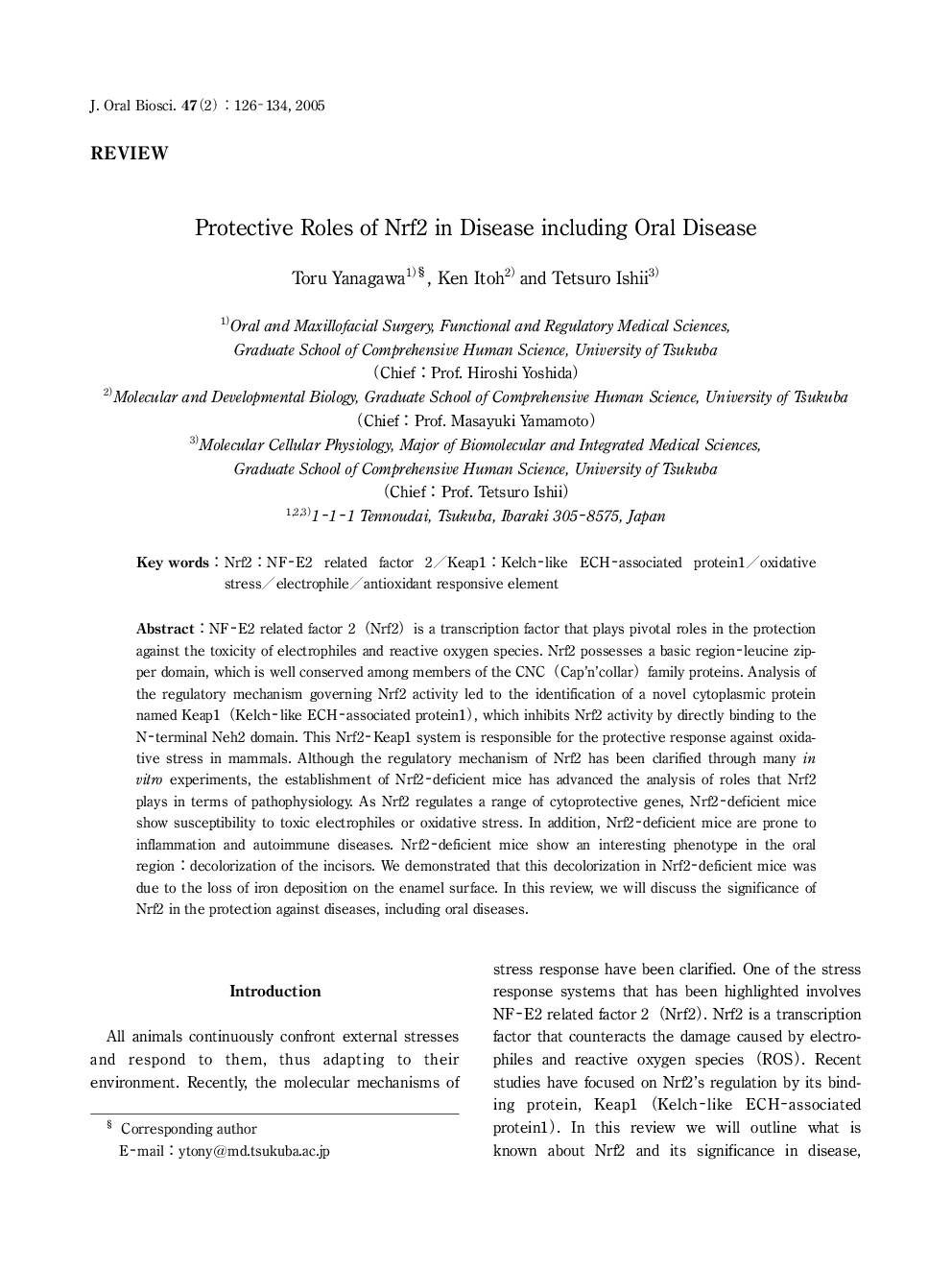| Article ID | Journal | Published Year | Pages | File Type |
|---|---|---|---|---|
| 9103369 | Journal of Oral Biosciences | 2005 | 9 Pages |
Abstract
NF-E2 related factor 2 (Nrf2) is a transcription factor that plays pivotal roles in the protection against the toxicity of electrophiles and reactive oxygen species. Nrf2 possesses a basic region-leucine zipper domain, which is well conserved among members of the CNC (Cap'n'collar) family proteins. Analysis of the regulatory mechanism governing Nrf2 activity led to the identification of a novel cytoplasmic protein named Keapl (Kelch-like ECH-associated protein 1), which inhibits Nrf2 activity by directly binding to the N-terminal Neh2 domain. This Nrf2-Keapl system is responsible for the protective response against oxidative stress in mammals. Although the regulatory mechanism of Nrf2 has been clarified through many in vitro experiments, the establishment of Nrf2-deficient mice has advanced the analysis of roles that Nrf2 plays in terms of pathophysiology. As Nrf2 regulates a range of cytoprotective genes, Nrf2-deficient mice show susceptibility to toxic electrophiles or oxidative stress. In addition, Nrf2-deficient mice are prone to inflammation and autoimmune diseases. Nrf2-deficient mice show an interesting phenotype in the oral region: decolorization of the incisors. We demonstrated that this decolorization in Nrf2-deficient mice was due to the loss of iron deposition on the enamel surface. In this review, we will discuss the significance of Nrf2 in the protection against diseases, including oral diseases.
Related Topics
Life Sciences
Biochemistry, Genetics and Molecular Biology
Clinical Biochemistry
Authors
Toru Yanagawa, Ken Itoh, Tetsuro Ishii,
